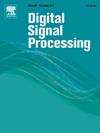Classification bias and regression bias adjustment for long-tailed traffic sign detection and recognition
IF 2.9
3区 工程技术
Q2 ENGINEERING, ELECTRICAL & ELECTRONIC
引用次数: 0
Abstract
Traffic sign detection and recognition (TSDR), as a pivotal technology in Intelligent Transportation System, has attracted growing focus and widespread application in recent times. However, in practical applications, the complexity and variability of road conditions lead to a pronounced long-tailed distribution in traffic signs, i.e., a few classes account for a large proportion of instances while most classes contain only a few instances. This long-tailed distribution leads to significant bias during training. In this paper, we identify that such bias issues exist not only in the classification branch but also in the regression branch. Therefore, we first propose the Classification Bias Adjustment (CA) module to address classification bias. This module combines margin adjustment and gradient adjustment strategies based on the mean classification scores to alleviate classification bias. Meanwhile, we propose the Regression Bias Adjustment (RA) module to address regression bias. This module re-weights the regression loss for each class in accordance with the mean Intersection over Union (IoU) to alleviate regression bias. Through comprehensive experiments on the TT100K and GTSDB datasets, it has been validated that our proposed approach has greater effectiveness than the existing state-of-the-art methods.
长尾交通标志检测与识别的分类偏差与回归偏差调整
交通标志检测与识别(TSDR)作为智能交通系统中的一项关键技术,近年来受到越来越多的关注和广泛应用。然而,在实际应用中,由于道路条件的复杂性和可变性,导致交通标志呈现出明显的长尾分布,即少数类占用了大量实例,而大多数类只包含少量实例。这种长尾分布在训练过程中导致了显著的偏差。在本文中,我们发现这种偏差问题不仅存在于分类分支中,也存在于回归分支中。因此,我们首先提出了分类偏差调整(CA)模块来解决分类偏差。该模块结合了基于平均分类分数的边际调整和梯度调整策略,以减轻分类偏差。同时,我们提出了回归偏差调整(RA)模块来解决回归偏差。该模块根据平均交联(Intersection over Union, IoU)对每个类的回归损失重新加权,以减轻回归偏差。通过在TT100K和GTSDB数据集上的综合实验,验证了我们提出的方法比现有的最先进的方法具有更高的有效性。
本文章由计算机程序翻译,如有差异,请以英文原文为准。
求助全文
约1分钟内获得全文
求助全文
来源期刊

Digital Signal Processing
工程技术-工程:电子与电气
CiteScore
5.30
自引率
17.20%
发文量
435
审稿时长
66 days
期刊介绍:
Digital Signal Processing: A Review Journal is one of the oldest and most established journals in the field of signal processing yet it aims to be the most innovative. The Journal invites top quality research articles at the frontiers of research in all aspects of signal processing. Our objective is to provide a platform for the publication of ground-breaking research in signal processing with both academic and industrial appeal.
The journal has a special emphasis on statistical signal processing methodology such as Bayesian signal processing, and encourages articles on emerging applications of signal processing such as:
• big data• machine learning• internet of things• information security• systems biology and computational biology,• financial time series analysis,• autonomous vehicles,• quantum computing,• neuromorphic engineering,• human-computer interaction and intelligent user interfaces,• environmental signal processing,• geophysical signal processing including seismic signal processing,• chemioinformatics and bioinformatics,• audio, visual and performance arts,• disaster management and prevention,• renewable energy,
 求助内容:
求助内容: 应助结果提醒方式:
应助结果提醒方式:


